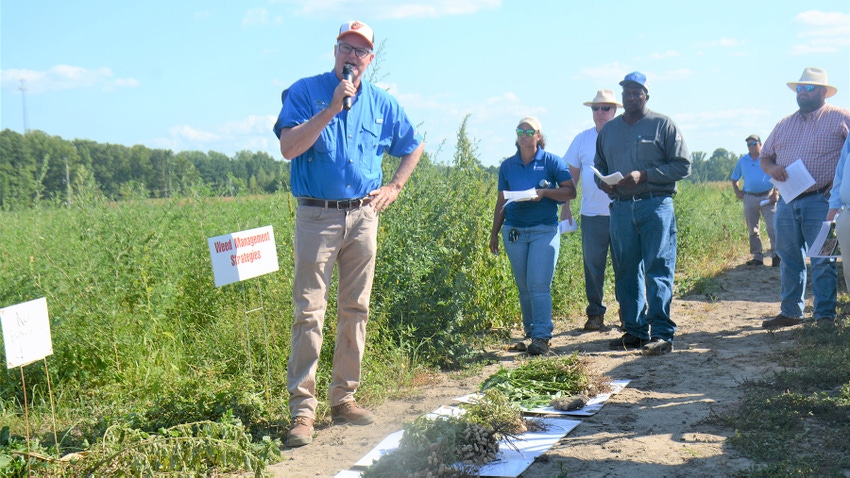
As peanut harvest draws closer, crop conditions across the Carolinas and Virginia remain variable with some areas experiencing drought stress and other areas seeing enough rainfall to move the crop forward.
As of Aug. 23, North Carolina State University Extension Peanut Specialist David Jordan is forecasting an average peanut yield of 4,000 pounds per acre across the Virginia-Carolinas growing region, due to adequate rainfall to maintain growth and development in many areas across the region in August.
“However, in routes around the peanut belt many fields are wilting and rolling leaves during the day. Continued dry conditions over the next few weeks would have a major negative impact on peanut yields,” Jordan warns.
Increase in spotted wilt
Jordan points out that incidences of tomato spotted wilt virus have increased in some areas of the Carolinas and Virginia peanut growing region. At the CHROME Regional Ag Expo Aug. 23 at the Peanut Belt Research Station in Lewiston-Woodville, he offered some late-season disease management recommendations.
He urged peanut farmers to turn to the North Carolina State University Extension peanut portal or sign up for daily e-mail delivery for the latest leaf spot and Sclerotinia blight advisories. He said the advisory is an important tool to assist farmers with spraying decisions. The advisory is designed to help farmers minimize fungicide applications by spraying only when weather conditions favor disease.
“Using the advisory can also decrease the likelihood that spider mites will become an issue because we can avoid fungicide sprays that flare this pest,” Jordan points out.
Jordan says humid conditions in the peanut canopy can be favorable for leaf spot development even if rain has been limited for an extended period of time. He advises peanut farmers to pick one or two advisories close to their farms to get a feel if conditions are favorable for leaf spot development. He said “last effective spray date” is the most important information that comes from the advisory.
“When I say ‘the last effective spray date,’ that simply means if you have sprayed since that date, you are protected from disease. If you haven’t sprayed since that date, you are likely to have some epidemics built up if you’re not careful. Application of fungicide for leaf spot is warranted,” the peanut specialist explained.
“It’s not just whether you have dry soil or not. It’s the humidity. The dew points at night can make a big difference. We’ve had some years where soils were dry and rainfall was limited. In some cases, there was a perception that we did not need to spray because we hadn’t had rain. But we got behind on leaf spot epidemics because we did not spray. Unfortunately, the pathogen causing leaf spot disease was active because humidity was high,” Jordan said at the field day.
Varied risk
Jordan did say that the Sclerotinia blight advisory was showing risk in certain areas, especially in Gates County, in northeastern North Carolina. He said some areas are at moderate to high risk for Sclerotinia blight, while other areas, such as southern North Carolina are at low to moderate risk.
He pointed out that growers should look at lower sections of fields for disease and then treat accordingly.
“That advisory works on soil temperature, so if the canopy is closed and we have some rain or irrigation, we probably have some activity there. One of the things that many peanut growers have done is use Miravis and Elatus for leaf spot sprays, and that treatment is also effective on Sclerotinia blight.,” Jordan said.
Jordan invited peanut growers to reach out to him at [email protected] if they want to get on the email list to receive the advisories each morning to help them in their fungicide application decisions.
The CHROME Regional Ag Expo is a collaborative effort of North Carolina Cooperative Extension agents in the four counties of the Chowan, Roanoke, and Meherrin River areas: Bertie, Halifax, Hertford, and Northampton Counties.
About the Author(s)
You May Also Like






